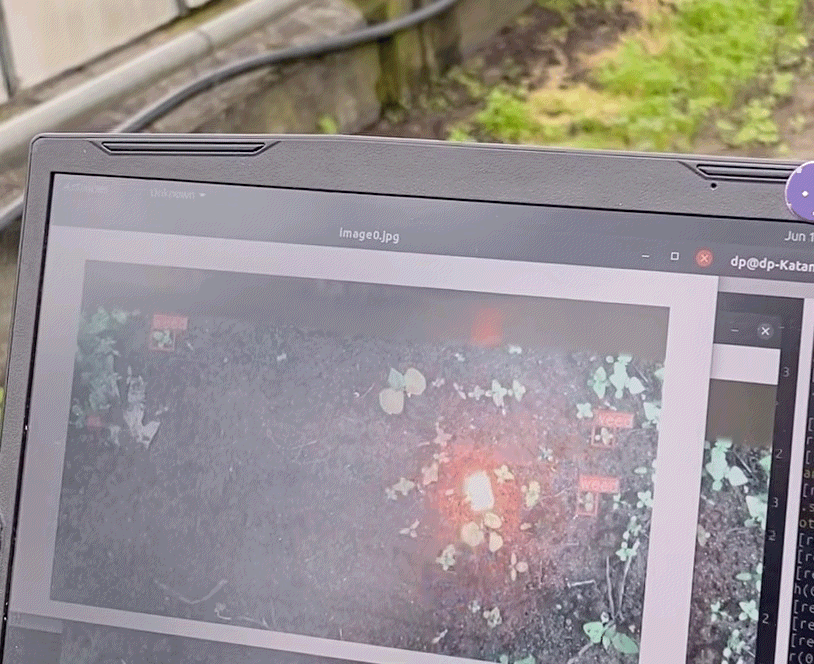Project Overview
This project focuses on developing an intelligent plant and weed identification system using deep learning techniques. By leveraging YOLO (You Only Look Once) for real-time object detection and PyTorch for model training and inference, the system efficiently classifies and detects different plant species and weeds in agricultural fields. This automation (integrated with machines/robots/drones) aims to assist farmers in precision agriculture by enabling targeted weed removal and optimizing crop management.
Demo
Technologies Used
- Deep Learning Framework: PyTorch
- Object Detection Model: YOLO (You Only Look Once) Version V8
- Dataset: Custom dataset containing labeled images of various plants and weeds
- Programming Language: Python
- Additional Libraries: OpenCV, NumPy, Matplotlib, Pandas, Torchvision
- Training Platform: GPU-enabled environment for accelerated deep learning computations
Features Implemented
- Real-time Plant and Weed Detection: Utilizes YOLO to perform fast and accurate identification of plant species and weeds.
- Custom Dataset Training: Trained on a curated dataset with diverse plant and weed samples.
- Model Optimization: Implements transfer learning and hyperparameter tuning to improve accuracy.
- Deployment Ready: Can be integrated into agricultural drones, robots, or mobile applications for field usage.
- Edge Computing Compatibility: Optimized for deployment on low-power edge devices like Google Coral Boards, NXP devices or NVIDIA sold hardware.
Implementation Stages
Dataset Preparation
- Collected and labeled images of plants and weeds.
- Augmented dataset to improve model robustness.
- Split dataset into training, validation, and test sets.
Model Training
- Used a pre-trained YOLO model and fine-tuned it on the custom dataset.
- Optimized training using techniques like learning rate scheduling and batch normalization.
- Evaluated performance using precision, recall, and mAP (mean Average Precision).
Inference and Testing
- Deployed the trained model on real-world images and video streams.
- Measured detection accuracy and inference speed.
- Fine-tuned post-processing to minimize false positives and false negatives.
Results and Performance
- Achieved high detection accuracy 98% with a precision-recall tradeoff.
- Real-time inference capable of processing multiple frames per second > 10fps on Intel Nuc or 15fps on NVIDIA hardware.
- Successfully identified weeds and plants in diverse lighting and background conditions.
I am constantly working on enhancements
- Expanding Dataset: Collect more diverse plant and weed images to improve generalization.
- Edge & Scaled Deployment: Optimize the model for embedded systems with low power consuming devices and on the field robots.
- Integration with Agricultural Equipment: Implement automated weed removal mechanisms.
- Mobile App Development for other use cases: Create a smartphone application for on-the-go plant and weed identification.
Note: Source code, Datasets or AI models were not released as open source as its proprietory.
